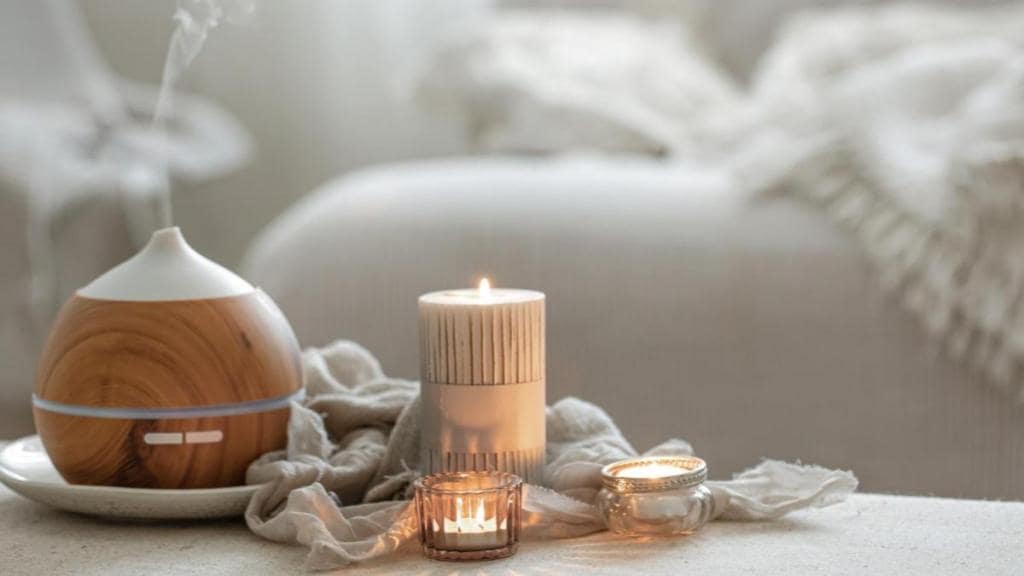A new study says scents can help alleviate low mood. Is olfactory and aromatherapy traditionally used in psychiatry, or is this a new revelation? Dr Shailesh Jha, consultant psychiatrist, Indraprastha Apollo Saarthak Mental Health Services, says, “Aromatherapy and essential oils have been used traditionally and anecdotally for centuries to lift mood and relieve stress. However, there wasn’t always clinical evidence behind these practices.” He says in the early 20th century, some psychiatrists did begin incorporating pleasant fragrances into treatment programmes to create a more calming environment for patients. So the connections between scent and mood/mental health have long been explored. The mechanisms linking smell to mood are becoming better understood — olfactory receptors are closely tied to the brain’s limbic system and emotion/memory centres. And the ability for scents to activate those parts of the brain is likely behind the antidepressant-like effects being measured. Solid scientific evidence verifying aromatherapy in addition to antidepressant treatment specifically for depression has really only accrued more recently through controlled clinical studies. The latest research is providing confirmation it can indeed help alleviate depressive symptoms.
What other sensory instruments are used as wellness strategies for mental health and for what?
Other sensory modalities and instruments that have been utilised in psychiatric treatments include:
Light therapy: Exposure to bright light is often used to help treat seasonal affective disorder (SAD). Light boxes or light visors provide targeted, regular doses of light to replace the sunlight that SAD patients lack, helping lift depression. It helps reset the body’s circadian rhythms.
Auditory stimulation: Techniques like auditory integration therapy and binaural beat stimulation use purposeful sound exposure that aims to impact psychological states. They may be used to help conditions like autism, ADD/ADHD, and anxiety by influencing brain wave patterns.
Vibration therapy: The use of mechanical vibration from devices has shown tentative promise for treating symptoms like stress and anxiety. The vibrations produce sensory nerve stimulation thought to activate parts of the sympathetic nervous system. Clinical evidence here is still limited.
Tactile therapy: Stimulating touch therapies like weighted blankets, deep pressure stimulation, and massage therapy leverage the tactile system to help regulate mood, anxiety and possibly even psychological trauma. Touch helps stimulate nerves that signal the release of neurotransmitters like serotonin.
In many cases, the mechanism relates to how stimulating various sensory organs produces neurological changes that help regulate mood and behaviour disorders. More research continues on which sensory-based approaches have the strongest evidence behind their efficacy and safety. But the mind and body responses to sensory input are proving useful for psychiatry.
Do most such tools basically help boost levels of serotonin and other happy hormones, or is there something else at play?
You are correct that many sensory-based therapies for mental health do seem to work by influencing levels of key neurotransmitters like serotonin.
However, there are likely additional mechanisms that contribute to the observed benefits:
Increasing serotonin is likely a major effect — sensory stimulation triggers nerve pathways that signal the release of serotonin, dopamine, and other neurotransmitters that regulate mood and behaviour. This offers a neurochemical explanation for uplifted mood and anxiety/stress reduction.
The stimulation causes downstream changes in areas of the nervous system tied to circadian rhythms, relaxation, fight-flight-or-freeze response etc. So effects extend beyond neurotransmitter activity to how the mind-body system regulates emotions and arousal.
Attention and memory centres of the brain also seem impacted by some sensory therapies. Those suffering from trauma and adverse childhood events have shown more organised brain function after certain sensory-based treatments.
Factors unrelated to neurotransmitter activity, like feelings of comfort and security from tactile stimulation, or a sense of calmness from smells, can benefit mental health. So in some cases the precise neurological mechanisms are still being explored.
So while the mood-regulating neurotransmitter effects play a crucial role, the benefits sensory therapies provide to mental health likely involve more complex pathways which is still experimental, affecting not just chemical messengers, but wider physiological and psychological processes influencing emotional states. More research continues.


